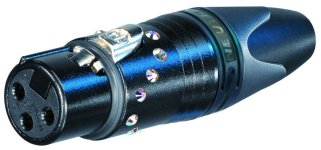Thanks. Wonder what the point is.Don't worry, it's as it should be.
You don't notice the silver plating wires because they represent 25% of the total, that is, 7 wires out of 28.
View attachment 1391271
From here
https://docs.rs-online.com/3f03/A700000007664694.pdf
Have now listened and the cables are working fine. Looking at the photos I took earlier they are a bit out of focus arent they!
Last edited:
Benchmark Media still sells star-quad line level cables. Here is one of their app notes: https://benchmarkmedia.com/blogs/application_notes/chatgpt-and-john-siau-discuss-star-quad-cables
That said, we have tried a number of line level cables including popular Mogami, Canare, star-quad, etc. In our experience they can sound different as a function of how they interact with the electronics connected at the ends.
That said, we have tried a number of line level cables including popular Mogami, Canare, star-quad, etc. In our experience they can sound different as a function of how they interact with the electronics connected at the ends.
Last edited:
yes, this is the way to do fine work. Nice video, exactly my taste of doing things.This proper old-school video has been invaluable for me and for anyone else curious to learn how to solder pins or improve on their current technique it may be beneficial. FF to 18.00 to see the best method of soldering wires to pin buckets.
Looking at the solder joints on xlr.the screen joint is particularly bad.there has not been enough heat to promote solder flow.its lumpy and is likely to fail.
It won't probably fail in near future but yes it's not neither nice looking neither optimal from a soldering pov:
It seems no wires have been pre tinned including the shield which have not been cleanly separated and braided either ( there should not be cutted strands in it), wire preparation is sloppy ( cotton filler/separation had not been cleanly cut, making fluffy thingy which can melt and pollute soldering job), pins are not solder filled enough for my own preferences.
I agree the way to correctly solder this kind of pins is given in the video ChrisCables linked.
It seems no wires have been pre tinned including the shield which have not been cleanly separated and braided either ( there should not be cutted strands in it), wire preparation is sloppy ( cotton filler/separation had not been cleanly cut, making fluffy thingy which can melt and pollute soldering job), pins are not solder filled enough for my own preferences.
I agree the way to correctly solder this kind of pins is given in the video ChrisCables linked.
Good feedback folks. To be honest I'm happy with the workmanship for the price I paid and the delivery speed was pretty exceptional.
Nice video on how to do it properly.
Nice video on how to do it properly.
That's the most important part I think- as long as you're happy with them!To be honest I'm happy with the workmanship for the price I paid and the delivery speed was pretty exceptional.
Some cable-sellers know that price and speed of delivery are the most important selling-points for a section of the market.
Personally, I can only offer 10 days or less delivery time because;
a) I have a constant queue of customers who are all willing to wait - this is something I definitely don't take for granted or undervalue, especially when there are competitors promising a much faster turnaround time.
b) My cables are built to my own very exacting build-quality standards, including testing and measuring before dispatch.
c) I don't want customers coming back to me complaining that their cables don't work anymore because of bad workmanship, broken solder joints, etc. Out of over 1000 units sold, only one set has come back for repair and that was only because they were damaged in transit. That's not a bad average I would suggest.
Some people are thankfully willing to pay a bit more for good workmanship.
😉
Yes.Some people are thankfully willing to pay a bit more for good workmanship.
Or - as in the case of the OP - with a little effort they could learn to do it themselves, doubling the fun. 🙂
Clear enough to see the gruesome soldering and stray shielding wires cut short - not the quality I would ever want to use in a brutal mobile PA application...Looking at the photos I took earlier they are a bit out of focus arent they!
I've never had a failure of cables from these guys: Custom Lynx
Standard balanced cables are poorly balanced. CMRR usually not better than 40dB. the quad cables like some mogamis are way better, and you can run these cables close to dimmer controlled mains cables without problems. It´s been a while since I visited the hirabayashi brothers in the mogami factory.
Last edited:
Yes.
Or - as in the case of the OP - with a little effort they could learn to do it themselves, doubling the fun. 🙂
View attachment 1391956
This sketch is for fixed instal where cable are connected one time and never used again for their entire life span. Which should be the case in some studio's part or home environnement.
If you use them constantly and under rough conditions they'll break soon enough because someone will pull them by the wire/cable instead of connector.
If you want to have a bit longuer lifespan, don't cut at 18mm but almost twice that length and make an S shape with them ( folding on themself): it'll give a bit margin when someone pull the cable and do not put constraints on the solder joints on the connector.
Do the same for the shielding and use capillarity* to soak solder on the last section of the S shaped shield, leaving the knee and last part solder free ( allowing free movement).
I learned this when i worked into a sound engineering school where students had access to sessions in our studios on daily basis 18 hours a day.
If cables where done as in the sketch lifespan was at most some weeks ( 3 to 5). Done with the S way they usually had a year before they needed to be serviced.
It's good approach for live use too.
*: when twisting the shield strands together doing the S shape don't apply to much force. Once done put your soldering iron on the last section for longuer time that you would normaly: it'll heat strands way deeper and will help with capillarity: solder will be soaked by itself into the twisted braid.
The technique works well with heavy multi stranded gauge cable too ( loudspeaker cable) if they need to be soldered or tinned ( to protect exposed strand from corrosion).
Yes.This sketch is for fixed instal where cable are connected one time and never used again for their entire life span. Which should be the case in some studio's part or home environnement.
As usual, I appreciate your descriptions of what happens in the professional world, and having appreciated it this time, I just want to add that the sketch is taken from a Neutrik PDF Assembly Instruction - XLR XX Series which I use as a reference when making my own DIY (XLR) cables.
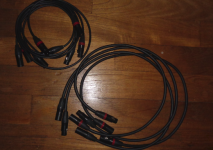
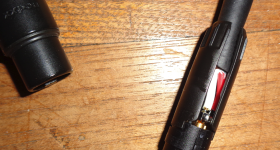
However, Neutrik connectors use a knurled chuck strain relief for a given cable diameter that makes it impossible for soldered or crimped wires to be torn out of the connector even if systematically pulled or twisted hard in a professional (careless) environment.
And, just as said, it is obvious that an amateur would never do this at home with his own cable/system.
Anyway, even if he did it would cause virtually no damage to the Neutrik connector wiring.
Neutrik did not become an industry standard by accident...
As far as I can ascertain, manufacturing takes place in:
As far as I can ascertain, manufacturing takes place in:
- Liechtenstein.
- Germany.
- France.
- United Kingdom.
- United States.
Interesting - no point to starquad then?Can you explain the use of a starquad in a mono signal connection? I have worked with starquad but that only works if you have 2 separate pairs. When you use it as 2 pairs in parallel it just is a waste of cable.
Now starquad was abandoned as it provided less emi shielding than 2 good pairs and most of the effect is lost when you take the ends apart to connect. Helped only to 30Mhz anyway.
Not for CAT-6 nor similar high-speed digital wiring. For analog audio, its still quite good. Two very different applications....no point to starquad then?
Neutrik did not become an industry standard by accident
I don't use any other type of XLR connector than those made by Neutrik.
From a design and reliability aspect they're simply better than any other XLR connector available and I've tried them ALL.
I can't seem to source the white ones much these days, even from my 3 suppliers.
You can't buy direct from Neutrik unless you're a distributor or bulk buyer with a €$10k annual spend unfortunately and few seem willing to stock it. Meh.
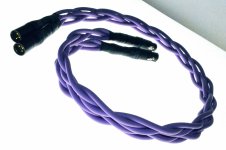
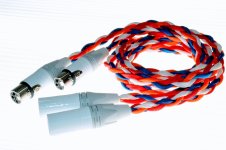

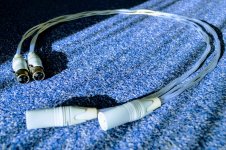
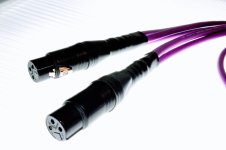
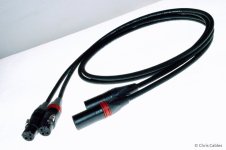
However, I was a little bit sick in my mouth when they introduced these monstrosities...
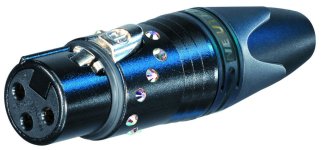
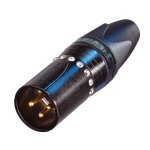
10 de-merits and no privileges, tuck-shop or rugger for a week Neutrik!
Attachments
If you use it as a cable for 2 balanced signals it can be useful. But harder to use than 2 separate cables for terminating on XLR for instance. Using a starquad as a single pair, single balanced signal is worse than just using a pair.Interesting - no point to starquad then?
Worse in what way? Its easy to show improved near-field EMI rejection at audio frequencies with star-quad.
However, Neutrik connectors use a knurled chuck strain relief for a given cable diameter that makes it impossible for soldered or crimped wires to be torn out of the connector even if systematically pulled or twisted hard in a professional (careless) environment.
And, just as said, it is obvious that an amateur would never do this at home with his own cable/system.
Anyway, even if he did it would cause virtually no damage to the Neutrik connector wiring.
Impossible to torn out connector on Neutrik's XLR thanks to the knurled chuck strain? Too bad we can't bet on this! 🙂
Let me see if i have pictures of some in old hardrive, i had documented this in our locker room as students did not understood why we checked cable ( and mics and all gear in fact... you wouldn't believe how people do not care when they did not spend money to buy things...) after each sessions and applyed fees if they were 'destroyed'. We had to have visual example not to discuss for hours. 🙂
I can garantee you there is nothing impossible and why we did our cable the way i explained. The Neutrik's system is clever and give a increased level of protection but in no way it's bulletproof as it rely on the wire jacket material and all are not very good quality or at least supposed to be exposed to such constraints.in particular when it's repeated.
Anyway, i'm not telling you how to do things.
I gave you a way to do, free to you to try it or not if you face the issue we had ( i told about it in my first post in this thread but did not revealed the method because it's not mandatory for the kind of use regular people in here have, i said the same about Starquad cables too as i think if you ask about it then you don't really have a use for it...).
It's like for Starquad. Some members told why and how we use it with example of where they bring things.
Other defeat the principle.
If you are curious, you buy 10 meters of Mogami 2534 ( or other Brand like Canare), a pair of Neutrik's connector and you compare it to a regular cable in harsh EMI/RFI environnement. Basreflex gave a real life example of such thing as i did too.
If it's placebo then it can be sold on second hand market, people will buy it if reasonably priced and soldering job is good, no worry about it. We are talking what... maybe 40 euros for the whole 10m cable you can sell for same price? Not bad for a test imho.
I did exactly the same 😉, but it seems like your answer is a bit excessive in my opinion.I gave you a way to do, free to you to try it or not if you face the issue we had
However, I'm sorry if you got it bad and I don't understand why, but it wasn't my intention at all.
Don't take it the wrong way, no one is questioning your knowledge in the professional field because it simply wouldn't make sense to do so.
The OP's request is clearly amateurish, just as was my answer, the professional field is quite far from this thread, and frankly from me too.
- Home
- General Interest
- Everything Else
- thinking of making my own balanced XLR cables
